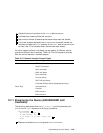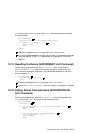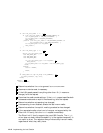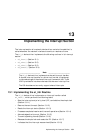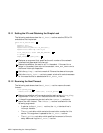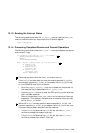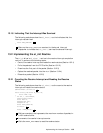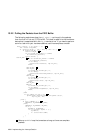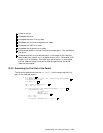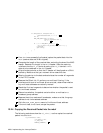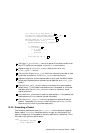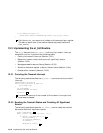
13.1.3 Reading the Interrupt Status
The following code shows how the el_intr( ) routine uses the READ_STS
macro to read the interrupt status from the I/O status register:
status = READ_STS(sc);
13.1.4 Processing Completed Receive and Transmit Operations
The following code shows how the el_intr( ) routine processes the receive
and transmit rings:
if (((status & (S_RC|S_TC|S_AF)) == 0) || sc->cardout) {
1
simple_unlock(&sc->el_softc_lock);
splx(s);
return INTR_NOT_SERVICED;
}
while ((status & (S_RC|S_TC|S_AF)) && (!el_card_out(sc))) {
2
if (status & S_RC)
el_rint(sc, ifp);
if (status & S_TC)
el_tint(sc, ifp);
if (status & S_AF)
el_error(sc, ifp);
status = READ_STS(sc);
}
1 Examines the status that the READ_STS macro returns.
If the status variable does not have the receive complete (S_RC) bit,
the transmit complete (S_TC) bit, or the adapter failure (S_AF) bit set,
or if the PCMCIA card is out of the slot:
• Calls the simple_unlock( ) routine to release the simple lock for
the resource that is associated with el_softc_lock.
• Calls the splx( ) routine to reset the CPU priority to the level that
the s variable specifies.
• Returns the constant INTR_NOT_SERVICED to the kernel interrupt
dispatcher. This constant indicates that this shared interrupt was
not for the if_el device.
2 While the status variable has the receive complete (S_RC) bit, the
transmit complete (S_TC) bit, or the adapter failure (S_AF) bit set, and
if the card has not been removed from the machine:
• If the status variable has the S_RC bit set, calls the el_rint( )
routine to process the receive interrupt.
• If the status variable has the S_TC bit set, calls the el_tint( )
routine to process the transmit interrupt.
Implementing the Interrupt Section 13–3



